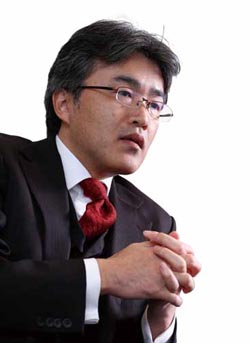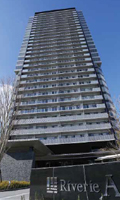

Many types of luxurious residences have emerged because of an increase in the supply of housing.
People have different images for "luxurious residences." Some say apartments costing more than ¥50 million are "luxurious," while those priced at ¥1 billion also exist. Regarding rental apartments, those with rent ranging from ¥200,000 to ¥4 million are labeled "luxurious," as if those in the lower end and the higher end are equally luxurious.
Generally, it is fair to say that ¥100 million would be considered "luxurious" apartments and ¥200 million or more would be considered "super luxurious" apartments.
In fact, luxurious apartments had not been widely known until recently. Instead of advertising luxurious apartments widely, housing companies had chosen to limit the amount of information to the market. Such buildings were generally low-rise and entrances were fenced off by tall plants so that passersby could not see within.
This meant housing companies were creating the feeling of "special treatment" for customers who wanted to live in luxurious residences by creating such situations that made them think, "Only I have the privilege of being informed of this special, luxurious apartment."
However, such a sales method did not continue to work as the supply of apartments increased. Now that characteristics of buildings have diversified, people are able to look inside apartments and see the views from the balcony via the Internet.
The supply of condominiums had been excessive for about 10 years since the late 1990s, the decade often labeled in the industry as "the era of condominium oversupply." During the period, central Tokyo saw many diverse residences.
Large-scale urban development projects such as Roppongi Hills (opened in 2003) and Tokyo Midtown (opened in 2007), both in Minato Ward, always included residential towers with rental apartments at high prices, along with commercial complexes containing offices and shops.
Before then, foreign executives in the financial industry and other industries had stayed in hotels, but they began demanding larger apartments, creating the need for serviced apartments that have kitchens, serve breakfast and offer housecleaning services and other services like those in a hotel.
Currently, some serviced apartments are available at lower rent and fewer services, which would then make them merely furnished rental apartments.
Foreigners tend to base their housing choices on the compatibility to their lifestyle
The Roppongi Hills area has various social gatherings such as cherry blossom viewing, Christmas parties, wine tasting events and star viewing events on rooftops. The residences provide various entertainment, making use of the characteristics of the buildings and other resources.
Stargazing and other gatherings to view rare astronomical events are particularly popular and they even have to limit the number of participants that can go up on the rooftop.
Japanese tend to base their housing choices on cost, distance to workplaces and commuting routes, but foreigners tend to base their housing choices on the compatibility to their lifestyles.
For example, Roppongi Hills Residence, with splendid views from the balconies, has a glitzy image like that for show-biz celebrities. For those who organize home parties frequently, English-proficient receptionists in the lobby would be a must.





Accommodation arrangements are always a source of headaches when Japanese companies invite their foreign group companies' employees to Japan for training or when companies outside Tokyo send their employees to the capital.

The high-rise condominium Riverie is situated in front of Minatocho Station on the Keikyu Daishi Line, just one stop from Keikyu Kawasaki Station. It is 12 minutes by train from Shinagawa and 15 minutes from Haneda Airport International Terminal Station.